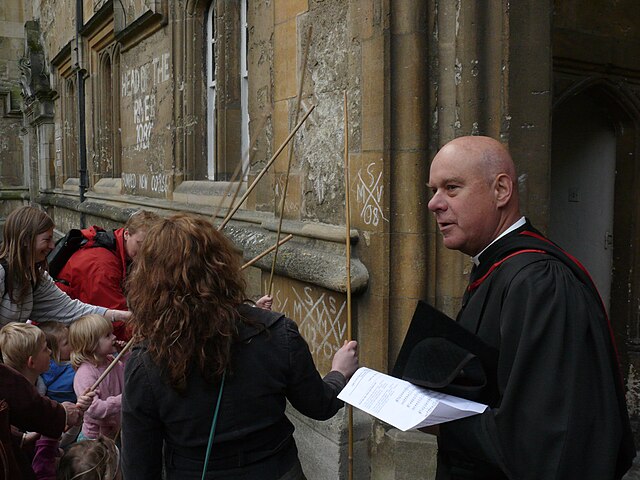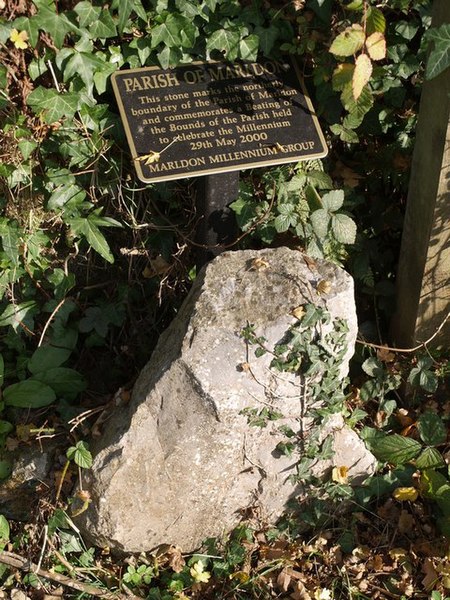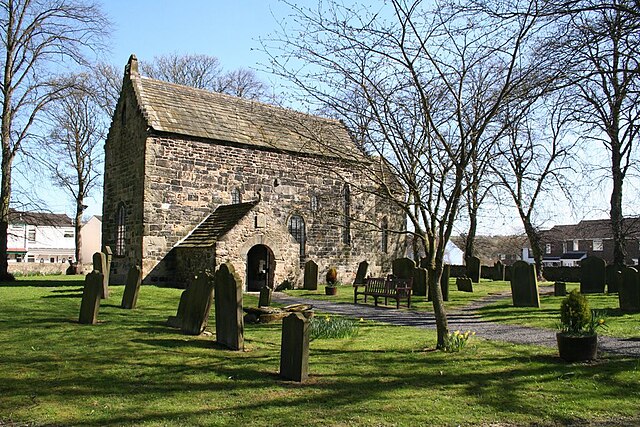Beating the bounds or perambulating the bounds is an ancient custom still observed in parts of England, Wales, and the New England region of the United States, which traditionally involved swatting local landmarks with branches to maintain a shared mental map of parish boundaries, usually every seven years.
Beating the bounds of the parish of the University Church of St Mary the Virgin in Oxford.
Beating the Bounds in Mill Lane, Cambridge. The clergy and people of Little St Mary's Church annually walk round the boundaries of the parish, singing hymns and psalms and praying for blessings on the residents and their activities.
Beating the bounds memorial plaque in West Ham
This stone commemorates a beating of the Marldon parish bounds in Devon in May 2000.
Parish (Church of England)
The parish with its parish church(es) is the basic territorial unit of the Church of England. The parish has its roots in the Roman Catholic Church and survived the English Reformation largely untouched. Each is within one of 42 dioceses: divided between the thirty of the Canterbury and the twelve of that of York. There are around 12,500 Church of England parishes. Historically, in England and Wales, the parish was the principal unit of local administration for both church and civil purposes; that changed in the 19th century when separate civil parishes were established. Many Church of England parishes still align, fully or in part, with civil parishes boundaries.
All Saints Bakewell, a parish church in Derbyshire
Escomb Church County Durham Saxon c.670-675
A parish boundary marker commemorating the ancient custom of Beating the bounds
A window commemorating a priest who served his parish for 47 years








